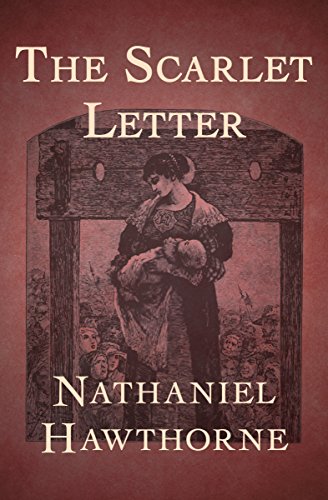Alienation of Hester Prynne and Her Daughter in Novel The Scarlet Letter
Alienation of Hester Prynne and Her
Daughter in Novel The Scarlet Letter
The
Scarlet Letter: A Romance, an 1850 novel, is a work of historical fiction written by
American author Nathaniel Hawthorne. It is considered his
"masterwork". Set in 17th-century Puritan Massachusetts Bay Colony,
during the years 1642 to 1649, it tells the story of Hester Prynne,
who conceives a daughter through an affair and struggles to create a new life
of repentance and dignity.
Throughout the book, Hawthorne explores themes of legalism, sin, and guilt.
Hester Prynne is the protagonist of Nathaniel Hawthorne's novel The Scarlet Letter. She is portrayed as a
woman condemned by her Puritan
neighbors. She's also a self-sufficient single mother in one of the gloomiest
most austere moments in America's history. She finds a way to support her
daughter in a time when women were just supposed to support their husbands. She
uses her innate strength to transform the meaning of her punishment, and she
actually questions the insane, hypocritical morals of her community.
Hester Prynne lived in Puritan
neighborhood, so I will explain about Puritan first since it plays a big role
in Hester’s alienation. The Puritans were English Reformed Protestants in
the 16th and 17th centuries who
sought to "purify" the Church of England from
its "Catholic" practices,
maintaining that the Church of England was only partially reformed. To put it
in an easy way, Puritan is a migration that laid the foundation for the
religious, intellectual, and social order of New England.
Hester committed adultery and she
had borne an illegitimate child that are a great sin for The Puritans as stated
in Chapter 3 on page 68 “else you would surely have heard of Mistress Hester
Prynne, and her evil doings. She hath raised a great scandal, I promise you, in
godly Master Dimmesdale’s church.” Some women shared their thoughts about
punishments that Hester should receive, such as “they should have put the brand
of a hot iron on Hester Prynne’s forehead” and “this woman has brought shame
upon us all, and ought to die.” (Chapter 2, Page 59). They were merciless when
it came to religion. Eventually, Hester’s final sentences are letter A, stands
for Adulterer, that tattooed to her bosom and her being imprisoned for few
years. Hester received not only punishment by law, but also by society. She got
alienated by the townspeople.
After Hester’s prison sentence was
over, she lived in an abandoned small cottage on the outskirts of town, far
from population (chapter 5, page 84). She wanted to change the way society look
at her. She did charity with the poor by giving some of clothes made by her in
free charge, but her intention did not get much appreciation. She felt that she
never belonged there because people treated her as she removed from the
community, and as if she lived on another planet. Ladies were slyly insulting
her. Other times, they would attack her directly and throw harsh words. Church
made her as a subject of sermon. Children shouted at her. Murmurs and whispers
from people were heard wherever she was going. Even strangers stared at her
letter A. Hester felt those actions like a daily torture for her, yet she had
to endure and believe that someday those eyes would change if she still did
good to others (Chapter 5, pages 86-89).
Hester’s only daughter, Pearl, was
also become the subject to alienation by the townspeople. They remarked Pearl
as product of sin because her mother was a sinner. She was forbidden to make
friends with other children. They scoffed and mocked Pearl and Hester out loud.
Pearl had no friends. She talked to imaginable being inside her head or things
around her (chapter 6, pages 95-97).
In chapter 7 on page 103, when
Hester and Pearl were on their way to Governor Bellingham’s mansion, a group of
children attacked them with mud without any reason. In chapter 13 on pages
155-156, Hester was kind to others by helping those who were in needs, and
people started to recognize her fair intention, yet few people still scorned
her. Good thing was no more harm happened to Hester and Pearl from society
afterward. Although the image of Hester as an adulterer could not be forgotten,
but society started to accept her as the meaning of letter A also changed from
“adulterer” into “able”.
By
the end of chapter 24, Hester Prynne could live her life peacefully. She whose
existence once was unknown finally went back alone to her old cottage and lived
there until she died. Her dead body even buried close to Dimmesdale’s grave.
Hester
might had suffered a lot from alienation, but she still tried to obtain the
acceptance of people around her. She was once a sinner, but she deserved a
second chance since she sought after it.
Author:
Arum Ratnaning Ratri
2211416050
English Literature 2016
Universitas Negeri Semarang
For subject:
Prose Analysis (503)


Komentar
Posting Komentar